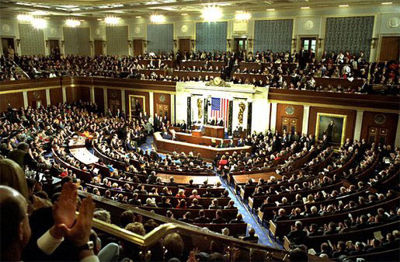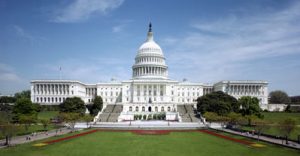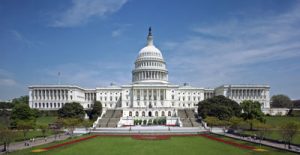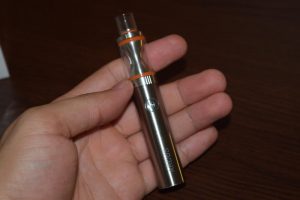Legislative Rider Could Save 99% of E-Cigarettes from Effective Ban
With the FDA’s final e-cigarette regulations nearly upon us, we are getting dangerously close to a leap back to the stone age of vaping, due to new rules that would have every vaporizer launched after February 15, 2007 removed from the market for retroactive approval, a process too expensive and tedious for most companies to bear.
 The FDA has stated that it lacks authority to change the grandfather date adopted in the Tobacco Control Act of 2009, so the vaping industry is focusing all its efforts on a legislative rider that they hope will convince members of Congress to alter the original date before it’s too late. If successful, the rider would would push the FDA’s proposed date from February 15, 2007, to 30 days after new regulation is published in the federal register, thus saving 99% of the electronic cigarettes on the market.
The FDA has stated that it lacks authority to change the grandfather date adopted in the Tobacco Control Act of 2009, so the vaping industry is focusing all its efforts on a legislative rider that they hope will convince members of Congress to alter the original date before it’s too late. If successful, the rider would would push the FDA’s proposed date from February 15, 2007, to 30 days after new regulation is published in the federal register, thus saving 99% of the electronic cigarettes on the market.
The rider has already received strong support from the President of Americans for Tax Reform Grover Norquist, who wrote to members of Congress urging them to change the FDA rules, as well as from veterans of the tobacco control movement like Dr. Michael Siegel and Scott D. Ballin who recently published an op-ed on The Hill, explaining what the predicate date of February 15, 2007 would mean to the vaping industry.
In 2009, when the Tobacco Control Act was enacted, the included predicate date for products subject to the legislative document – tobacco cigarettes and smokeless tobacco – basically allowed existing brands to remain on the market, while subjecting new products to a burdensome pre-approval process with the FDA. Tobacco companies were not required to lower the levels of carcinogens in their products, eliminate menthol, which was known to appeal to youth, or alter nicotine content. As long as they had been on the market prior to February 15, 2007, they were given a free ride.
So while tobacco cigarettes get to stay on the market year after year, without submitting any kind of approval applications or meeting any safety requirements, 99% of electronic cigarettes, which current scientific evidence has found to be much safer than smoking, have to be submitted for pre-approval. Combustible cigarettes have remained virtually unchanged since 2007, but electronic cigarette technology has come so far in the last couple of years alone, that removing every vaporizer launched in the last 18 years would practically throw us back into the stone age of vaping. Does that sound like leveling the playing field to you?
E-cigarettes today are not only more technologically advanced, but also considerably safer than they were in 2007, despite what you may read in the media. Research has shown that the levels of potentially harmful substances in e-cigarette vapor has decreased throughout the years, as companies launched new and innovative devices. But if the grandfather date proposed by the FDA remains unchanged, you can expect to be vaping on nothing but old, obsolete cigalikes.
Because electronic cigarettes are so new, 99.9% of them would fall under the FDA’s proposed rule, meaning they would be removed from the market until approved by the agency. Manufacturers would first have to file a substantial equivalence application (SE) with the FDA, to show that their product is substantially similar to a product on the market before February 15, 2007. This is what tobacco companies use when they want bring a new product to the market.
If the SE is rejected, e-cigarette and e-liquid companies have to file a Pre-Market Tobacco Application (PMTA), which are far more burdensome and are expected to cost between $2 and $10 million per product, something that no vaping goods company could afford, especially if they have more than a single product. In fact, the FDA has not accepted a single PMTA for cigarettes or smokeless tobacco, indicating that the cost may be too prohibitive even for Big Tobacco.
As Siegel and Ballin note in their op-ed, “the FDA has apparently decided that electronic cigarettes pose a much greater threat to the health of the public than the extremely toxic tobacco cigarettes that are killing more than 400,000 Americans each year. While tobacco cigarettes are given a free ride – they can stay on the market without submitting any application and without satisfying any safety requirement—much safer electronic cigarettes must go through a nearly impossible, expensive, and burdensome application process that will decimate the industry.”
And yet, so-called health activism groups like Campaign for Tobacco-Free Kids and the American Lung Association oppose any kind of change to the FDA’s proposed regulations, claiming it would exempt e-cigarettes from vital safety regulations.
Gregory Conley, President of American Vaping Association claims such groups are not honest about their motives: “Anti-harm-reduction activists are not being honest about their motives in opposing this bill. This change is not about stopping the FDA from regulating vapor products; it is about preventing the FDA from banning nearly every product on the market today. The truth is that these groups want vapor products to be banned.”
















